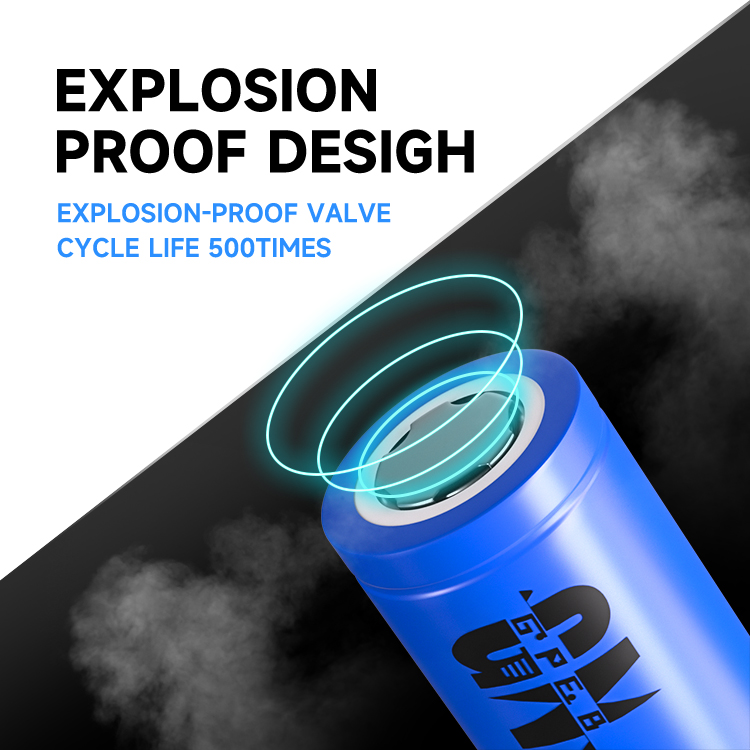

Nickel-cobalt-manganese ternary materials are a new type of lithium-ion battery cathode materials developed in recent years. They have important advantages such as high capacity, good cycle stability, and moderate cost. This type of material can effectively overcome the high cost of lithium cobalt oxide materials at the same time. Problems such as low stability of lithium manganate materials and low capacity of lithium iron phosphate have been successfully applied in batteries, and the scale of application has developed rapidly.
Nickel-cobalt-manganese ternary materials are a new type of lithium-ion battery cathode materials developed in recent years. They have important advantages such as high capacity, good cycle stability, and moderate cost. This type of material can effectively overcome the high cost of lithium cobalt oxide materials at the same time. Problems such as low stability of lithium manganate materials and low capacity of lithium iron phosphate have been successfully applied in batteries, and the scale of application has developed rapidly.
According to disclosures, the output value of China's lithium-ion battery cathode materials reached 9.575 billion yuan in 2014, of which ternary materials accounted for 2.74 billion yuan, accounting for 28.6%. In the field of power batteries, ternary materials are rising strongly. The BAIC EV200 launched in 2014 , Chery eQ, JAC iEV4, Zotye Cloud 100, etc. all use ternary power batteries.
At the 2015 Shanghai International Auto Show, among new energy vehicles, the share of ternary lithium batteries exceeded that of lithium iron phosphate batteries and became a highlight. Most mainstream domestic car companies including Geely, Chery, Changan, Zotye, and China have launched New energy models using ternary power batteries. Many experts predict that ternary materials are expected to replace expensive lithium cobalt oxide materials in the near future with their excellent performance and reasonable manufacturing costs.
It was found that the proportion of nickel, cobalt and manganese in the nickel-cobalt-manganese ternary cathode material can be adjusted within a certain range, and its performance changes with the different proportions of nickel-cobalt-manganese. Therefore, in order to further reduce high-cost transition metals such as cobalt and nickel, content, and the purpose of further improving the performance of cathode materials; countries around the world have done a lot of work in the research and development of ternary materials with different nickel-cobalt-manganese compositions, and have proposed a number of ternary materials with different nickel-cobalt-manganese ratios. Ternary material system. Including 333, 523, 811 system, etc. Some systems have successfully achieved industrial production and application.
This article will systematically introduce the latest research progress and results of several major nickel-cobalt-manganese ternary materials in recent years, as well as some research progress in doping, coating, etc. carried out in order to improve the properties of these materials.
1 Structural characteristics of nickel-cobalt-manganese ternary cathode material
Nickel-cobalt-manganese ternary materials can usually be expressed as: LiNixCoyMnzO2, where x+y+z=1; depending on the molar ratio of the three elements (x:y:z ratio), they are called different systems, such as A ternary material with a nickel-cobalt-manganese molar ratio (x:y:z) of 1:1:1 is referred to as type 333. A system with a molar ratio of 5:2:3 is called the 523 system, etc.
Ternary materials such as type 333, type 523 and type 811 all belong to the α-NaFeO2 type layered rock salt structure of the hexagonal crystal system, as shown in Figure 1.
In the nickel-cobalt-manganese ternary material, the main valence states of the three elements are +2, +3 and +4, with Ni being the main active element. The reaction and charge transfer during charging are shown in Figure 2.
Generally speaking, the higher the content of active metal components, the greater the capacity of the material. However, when the content of nickel is too high, it will cause Ni2+ to occupy the Li+ position, exacerbating the cation mixing, resulting in a reduction in capacity. Co can suppress cation mixing and stabilize the layered structure of the material; Mn4+ does not participate in electrochemical reactions, providing safety and stability while reducing costs.

Popular recommendation
CR2450 battery.Commonly used filament preheating circuits for fluorescent lamps
2023-10-08802540 lipo battery.Cylindrical lithium battery 21700 from a technical perspective
2023-10-099v alkaline battery.Analysis on BYD e6 battery technology
2023-10-08Nickel Metal Hydride No. 5 battery.Research and latest progress of nickel-cobalt-manganese ternary m
2023-10-09601525 lipo battery.The United States develops a new type of button battery that will not harm the b
2023-10-09LR621 battery.Introduction to the production process of 18650 lithium-ion battery pack
2023-10-123.7V Lithium Polymer Battery.[Popular Science] Research on the mechanism of 18650 battery failure ca
2023-10-09battery aaa alkaline.Research progress on metallurgical treatment of waste nickel-cadmium batteries
2023-10-09CR927 battery.Analyze whether OEMs should enter the lithium-ion battery industry from the four dimen
2023-10-08lithuim ion battery 18650.Research on ion-conducting membranes for high-power, long-life alkaline zi
2023-10-08What causes the loss of battery energy
2022-11-041800mah 18650 battery.What is the difference between polymer lithium battery and 18650 lithium batte
2023-10-13